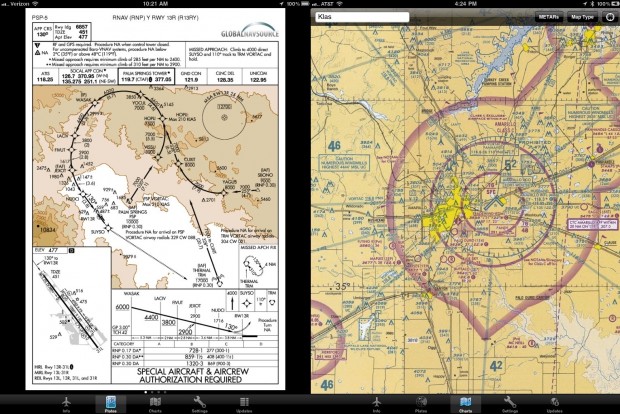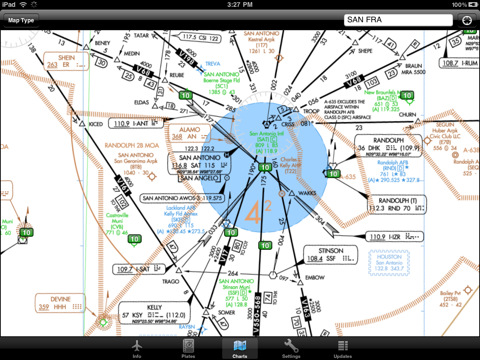
Update: I’ve been alerted that EFB may in fact be a pretty blatant copy of ForeFlight, and the screenshots I’ve seen are suggestive. There are only so many ways to display standardized information (especially with Apple’s UI restrictions), but the similarities are striking.
Back in February, we heard that a private jet company had gotten FAA approval to use an iPad-based charting system instead of paper charts, which are the standard throughout the industry. They used an app called Mobile TC, but GlobalNavSource has come up with another app, EFB (“electronic flight bag”), and it’s being offered for free until they release it commercially on June first. This isn’t Flight Control crossed with Google Maps: it’s an actual tool for pilots that could easily be used by commercial airlines in the next couple years.
The app includes detailed maps of airports, approach vectors, flight lanes, and actively monitors thousands of weather stations throughout the US. All the data is collated internally and distributed automatically; there’s no need for a secondary subscription or what have you. And it’s downloaded ahead of time, so it can be actually used during flight, not just for prep.

One pilot comments at Hacker News that he would be concerned about two things: a pilot relying too heavily on the iPad, which, while robust enough to garner FAA approval in the previous situation, still has batteries and may fail or get damaged. A lazy or sloppy pilot might not think to familiarize or provide himself with the paper maps. Of course, a lazy or sloppy pilot suggests to me a number of dangers. The bright iPad screen could also be a hindrance to night vision (glowing or lit instruments are generally kept to a minimum during near-ground navigation), but that’s a matter for the pilots to work out in situ.
What I wonder is whether an app like this on a piece of consumer tech will be deemed the proper vector, as it were, for this information. Screens built into the cockpit would potentially be more closely tied to the plane, more secure, easier to regulate, and so on. But a plane with such a system might easily outlive the system’s practicality (it would look as antiquated in ten years as the switches and dials look now), and of course there are other risks inherent in such an approach. Yet some companies (as a commenter noted on our previous post) have been using Windows-based tablets for this purpose for quite a while.
You can download the app from iTunes for free until June first, but after that time it will be a subscription service, which really is the only thing that makes sense, given the presumably large cost of operating this service.